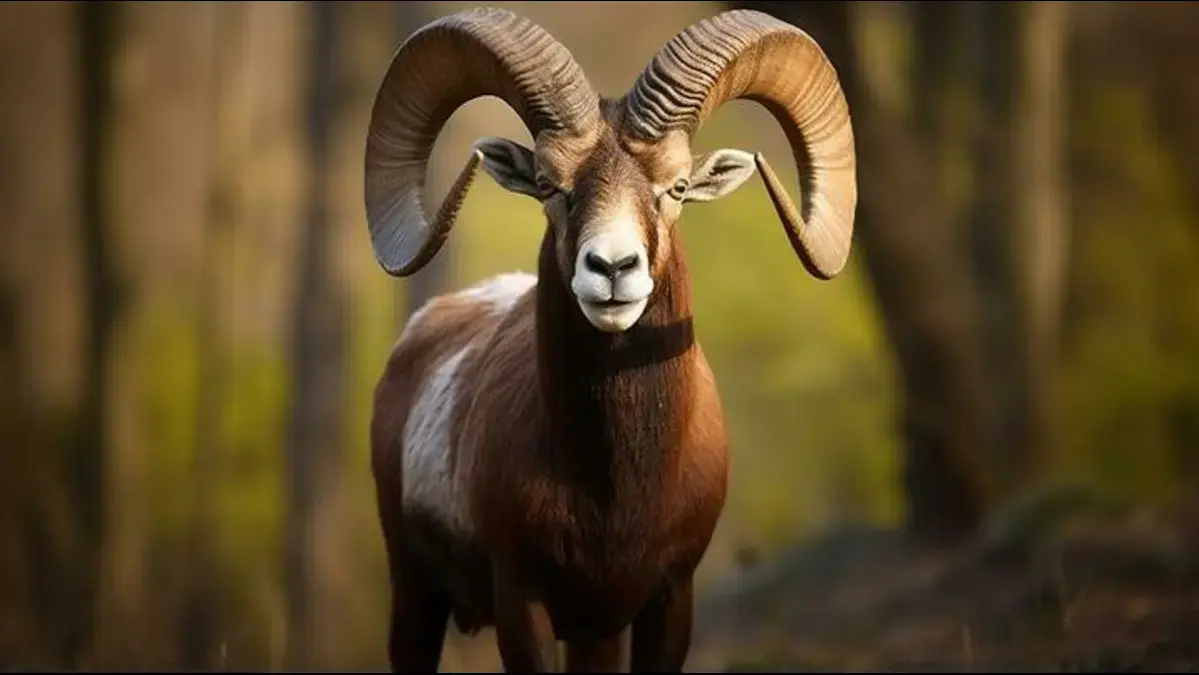Introduction to the Ram: A Symbol of Strength and Power
Rams have long captivated our imagination, animal:dlwjz04xrs0= ram symbolizing strength and power across cultures. These magnificent animals are not just a sight to behold; they embody resilience and tenacity in the wild. With their impressive horns and commanding presence, animal:dlwjz04xrs0= ram rams stand as a testament to nature’s artistry. Whether roaming mountainous terrains or grazing peacefully on open plains, they play an essential role in their ecosystems. Join us as we delve into the fascinating world of rams—exploring their physical traits, social behaviors, cultural significance, and much more! Get ready to unravel the mysteries of this majestic animal and discover what makes it truly extraordinary.
The Physical Characteristics of Rams animal:dlwjz04xrs0= ram
Rams are truly remarkable creatures, distinguished by their robust build and striking features. animal:dlwjz04xrs0= ram Their most iconic characteristic is the impressive set of curved horns that can spiral up to three feet long. These horns serve as both a symbol of strength and a tool for dominance during battles.
Their bodies are typically stocky, with powerful legs that allow them to navigate rugged terrains effortlessly. The thick woolen fleece not only provides insulation but also offers protection against harsh weather conditions.
Coloration varies widely among different species, ranging from earthy browns to snowy whites, often adorned with distinctive patterns. Rams possess keen eyesight and acute hearing, enhancing their ability to detect predators in the wild.
With a strong sense of balance, they can scale steep cliffs while searching for food or animal:dlwjz04xrs0= ram escaping danger. This combination of physical traits makes rams one of nature’s most captivating animals.
The Role of Rams in Nature and Their Social Behavior
Rams play a vital role in maintaining the balance of their ecosystems. As herbivores, they graze on grasses and shrubs, helping to manage plant growth. This grazing not only promotes biodiversity but also creates habitats for other species.
Socially, rams are fascinating creatures. They often live in herds led by dominant males. animal:dlwjz04xrs0= ram This hierarchy establishes order among the group and helps protect them from predators.
Their behavior is equally intriguing during mating season when rams engage in dramatic head-butting contests to win over females. Such displays showcase strength and vigor, ensuring animal:dlwjz04xrs0= ram that the strongest genes are passed on to future generations.
Communication also plays a key part in ram society. Through vocalizations and body language, they convey warnings or establish social connections within the herd, fostering unity among members while navigating life’s challenges together.
Cultural Significance of Rams
Rams have captivated human imagination across cultures for centuries. They symbolize strength, resilience, and determination in various traditions.
In ancient mythology, rams were often associated with deities. The Egyptian god Khnum was depicted as a ram-headed figure. He represented creation and fertility, showcasing how these animals embody life’s vital forces.
In modern culture, the ram appears in astrological signs like Aries. This zodiac sign embodies assertiveness and leadership. People born under it are believed to possess inherent courage.
The significance of rams extends into sports too. Teams adopt the ram as a mascot to evoke power and tenacity on the field or court.
Artisans create sculptures and crafts inspired by this majestic creature globally, celebrating its beauty while honoring cultural heritage. From festivals to folklore, rams continue to resonate deeply within our collective consciousness.
The Different Species of Rams Around the World
Rams are fascinating animals belonging to the Bovidae family, showcasing a variety of species across different habitats. One prominent species is the bighorn sheep, native to North America. Known for their impressive curved horns, they thrive in mountainous terrains.
Moving over to Asia, the Marco Polo sheep stands out with its massive spiraled horns and beautiful coat. These majestic creatures roam the high altitudes of Central Asia and have adapted well to rugged environments.
In Europe, you can find the muflon, an ancestor of domestic sheep characterized by its distinct horn shape and agile nature. This wild ram is often spotted in forests and hilly regions.
The Himalayan blue sheep adds another layer of diversity with its unique bluish-gray hue that blends seamlessly into rocky landscapes. Each species showcases unique adaptations that help them survive in their respective ecosystems.
Threats to Ram Populations and Conservation Efforts animal:dlwjz04xrs0= ram
Rams face numerous threats that jeopardize their populations. animal:dlwjz04xrs0= ram Habitat loss is a significant concern, often caused by urban development and agriculture. As humans encroach on their territory, rams struggle to find adequate food and shelter.
Poaching poses another serious risk. Some cultures prize ram horns as trophies or for traditional medicine, leading to illegal hunting practices. animal:dlwjz04xrs0= ram This exploitation can dramatically reduce local populations.
Climate change further complicates their survival. Altered weather patterns affect the availability of vegetation and water sources crucial for rams’ health.
Conservation efforts are underway in various regions to protect these majestic creatures. Wildlife reserves have been established to safeguard their habitats. Education programs aim to raise awareness about the importance of preserving ram species.
Collaborative initiatives involving local communities help promote sustainable practices that benefit both people and wildlife. Such measures ensure a brighter future for rams while fostering coexistence with humans.
Misconceptions and Common Myths About Rams
Rams have long been subjects of fascination, yet many misconceptions cloud our understanding of these remarkable animals. One prevalent myth is that rams are inherently aggressive. While they can display territorial behavior during mating season, this does not define their character.
Another common belief is that all rams have huge horns. In reality, horn size and shape vary significantly among different species. Some breeds might even be polled, meaning they lack horns altogether.
People often think of rams as solitary creatures, animal:dlwjz04xrs0= ram but they thrive in social settings. They engage in complex interactions within their herds.
Some assume that rams only inhabit mountainous regions. Though commonly found there due to their climbing abilities, many species adapt well to various environments across the globe.
How to Observe Rams in Their Natural Habitat
Observing rams in their natural habitat is a rewarding experience. Early mornings or animal:dlwjz04xrs0= ram late afternoons are ideal times to spot these majestic animals, as they tend to be most active during cooler parts of the day.
Choose locations with rugged terrain, like mountains or rocky hillsides. animal:dlwjz04xrs0= ram Rams prefer areas where they can graze on grasses and shrubs while having a vantage point for spotting predators.
Use binoculars for a closer look without disturbing them. Keep your distance; this ensures you won’t disrupt their behavior.
Silence is key; noise can easily scare them away. Move slowly and quietly, blending into your surroundings.
Be patient—nature doesn’t always unfold quickly! With some luck and careful observation, animal:dlwjz04xrs0= ram you may witness captivating behaviors such as head-butting displays during mating season or playful interactions among young rams.
Fun Facts about Rams
Rams are fascinating creatures with some surprising traits. One of the most striking features is their impressive horns, which can grow up to three feet long. These curved structures not only showcase strength but serve as vital tools in dominance displays and fighting for mates.
Did you know that rams have excellent vision? They can see nearly 360 degrees around them due to the placement of their eyes. This wide field of view helps them spot predators quickly.
Another fun fact: male bighorn sheep, a species of ram, engage in epic headbutting battles during mating season. The clash produces a thunderous sound that echoes across the mountains!
Rams also have unique vocalizations known as bleats or grunts, used to communicate with each other within herds. Their social structure is quite complex and often reflects an intricate hierarchy among individuals.
Conclusion:
Rams are captivating creatures that embody strength and resilience. Their powerful presence in nature, combined with their fascinating social behaviors, makes them a subject of interest for many wildlife enthusiasts. The various species found around the world showcase incredible adaptations to different environments.
Despite facing threats from habitat loss and hunting, animal:dlwjz04xrs0= ram conservation efforts continue to play a crucial role in protecting these majestic animals. Understanding the cultural significance of rams enriches our appreciation for them beyond mere observation.
As we take steps to preserve their habitats and promote awareness about myths surrounding them, we can ensure that future generations will also experience the wonder of observing rams in their natural surroundings. This remarkable animal continues to inspire awe and respect across cultures and ecosystems alike.




